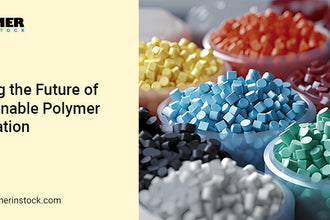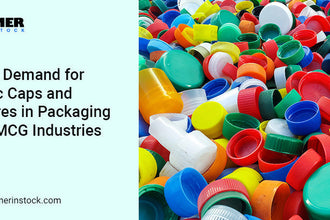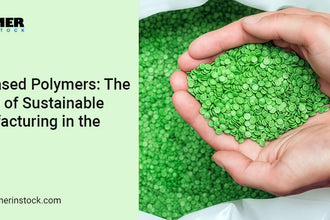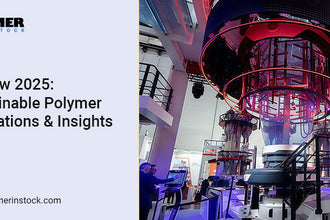
The global polymer industry is undergoing a powerful transformation — one defined by sustainability, collaboration, and innovation. As demand for advanced materials continues to grow across sectors like packaging, automotive, and consumer goods, polymer innovation is no longer just about performance. It’s about designing responsibly, reducing waste, and aligning with the world’s evolving sustainability goals.
At major industry events like K Show 2025, leaders, scientists, and engineers gathered to explore how sustainable polymers are driving the next era of material progress. The focus was clear — finding real, scalable ways to transition from fossil-based feedstocks to renewable, circular, and bio-based alternatives.
Redefining Polymer Innovation for a Circular Economy
The polymer industry has reached an inflection point. Companies are realizing that innovation isn’t only about creating new materials — it’s about creating better systems. This is where circular economy polymers come into play.
Manufacturers are investing heavily in advanced recycling technologies that give plastic materials multiple lifecycles instead of one. From mechanical recycling to chemical depolymerization, breakthroughs are enabling polymers to be reused without compromising performance or safety.
This progress not only reduces landfill waste but also minimizes the carbon footprint associated with traditional resin production. As governments tighten regulations and consumers demand transparency, the shift toward recycled polymer materials is becoming a strategic advantage rather than an optional initiative.
Bio-Based Polymer Solutions: Real Progress, Real Impact
Among the most promising developments in the industry are bio-based polymer solutions — materials derived from renewable sources like corn, sugarcane, or algae. These innovations aim to replicate or even outperform the properties of conventional plastics while drastically lowering environmental impact.
At the K Show 2025, several companies unveiled new bio-based grades of PLA (Polylactic Acid), PHA (Polyhydroxyalkanoates), and bio-PET, showcasing how R&D is bridging the gap between sustainability and scalability. Many of these materials are now suitable for food-grade packaging, medical devices, and even automotive components — applications once considered beyond the reach of bio-based alternatives.
While the production of bio-polymers still faces cost and infrastructure challenges, growing investment in biotechnology, enzyme catalysis, and renewable feedstock sourcing is rapidly improving their competitiveness. This aligns perfectly with the global ambition to create sustainable polymers that balance performance, affordability, and environmental stewardship.
Advanced Polymer Technologies: Where Science Meets Sustainability
Innovation in polymers has always been driven by science — but the latest wave of advanced polymer technologies is combining chemistry with digital intelligence.
Machine learning models are now predicting material performance, reducing trial time in research labs. AI-driven simulations allow engineers to optimize polymer structures for recyclability and strength before they’re even produced. Additive manufacturing is pushing boundaries by enabling lightweight yet durable polymer parts that use fewer raw materials.
This integration of technology and materials science is accelerating the shift toward eco-friendly plastics that meet sustainability goals without compromising on quality. The future of polymer design is intelligent, data-backed, and deeply collaborative.
Polymer Market Trends: Shaping a Sustainable Global Supply Chain
The global polymer landscape is being reshaped by sustainability mandates and evolving market forces. According to recent polymer market trends, several key shifts are defining the decade ahead:
-
Regulatory Pressure: Governments are implementing recycled content requirements — such as 30% minimum recycled polymer in packaging — driving demand for high-quality recyclates.
-
Consumer Awareness: Brands are under increasing scrutiny to prove the sustainability of their materials and packaging.
-
Regional Diversification: Countries in Asia and the Middle East are expanding polymer recycling and compounding capacities to reduce reliance on imports.
-
Circular Investments: Major producers are investing billions in chemical recycling facilities and renewable energy integration.
These factors are collectively steering the market toward a circular polymer economy, where every stage of production, use, and disposal contributes to environmental responsibility.
Collaboration: The Catalyst for Sustainable Growth
No single company can solve the challenges of sustainability alone. The future of sustainable polymers depends on partnerships that span industries, governments, and academic institutions.
Collaborative initiatives such as consortiums for advanced recycling or shared R&D on bio-based polymer solutions are fostering collective innovation. This open approach accelerates technological progress while spreading the cost and expertise needed for large-scale change.
At events like K Show, this collaboration is visible in action — with polymer producers, recyclers, and end-use manufacturers co-developing sustainable materials that can meet global performance standards. These partnerships symbolize the next phase of the polymer industry: cooperation over competition.
Challenges on the Road to Circularity
While the industry’s commitment to sustainability is stronger than ever, the path forward still presents significant hurdles.
-
Infrastructure Gaps: Many regions lack the advanced recycling facilities needed to process diverse polymer types.
-
Cost Dynamics: Recycled and bio-based polymers can still be more expensive than virgin materials, although the gap is narrowing.
-
Consumer Education: True circularity requires awareness at every level — from producers to end-users.
Addressing these challenges requires a balance between innovation and practicality. The companies that succeed will be those that integrate sustainability into every part of their value chain — from sourcing to product design to post-consumer recovery.
The Road Ahead: Building a Circular Polymer Future
The evolution of sustainable polymers represents more than a technological shift — it’s a mindset transformation. The polymer industry is now focused not just on what materials can do, but what they can undo — waste, emissions, and inefficiency.
At Polymer in Stock, we believe innovation is the key to creating a circular and responsible polymer ecosystem. With every advancement in polymer innovation, every partnership we build, and every investment made in recycling infrastructure, we’re helping industries move closer to a truly sustainable future.
The future of polymers is not linear. It’s circular, intelligent, and sustainable — driven by collaboration, guided by innovation, and powered by purpose.



 +44 20 8123 5191
+44 20 8123 5191










